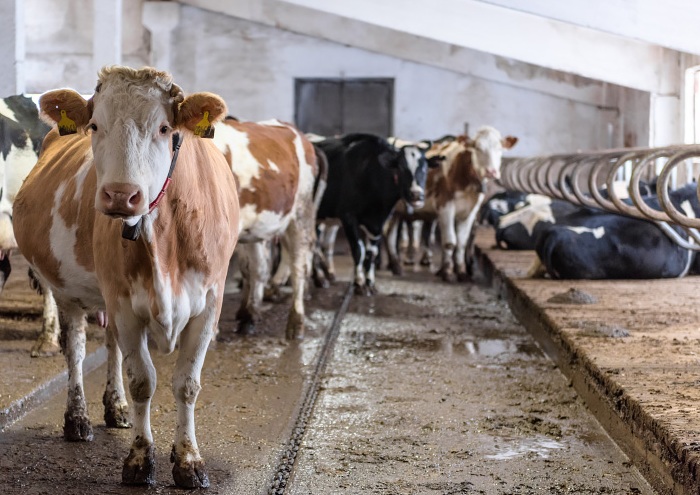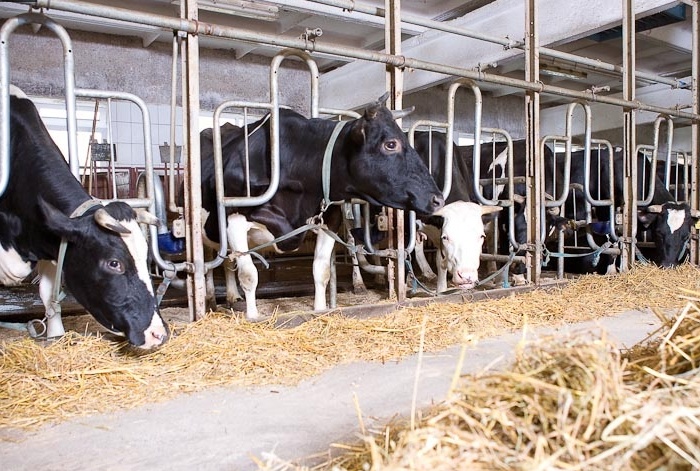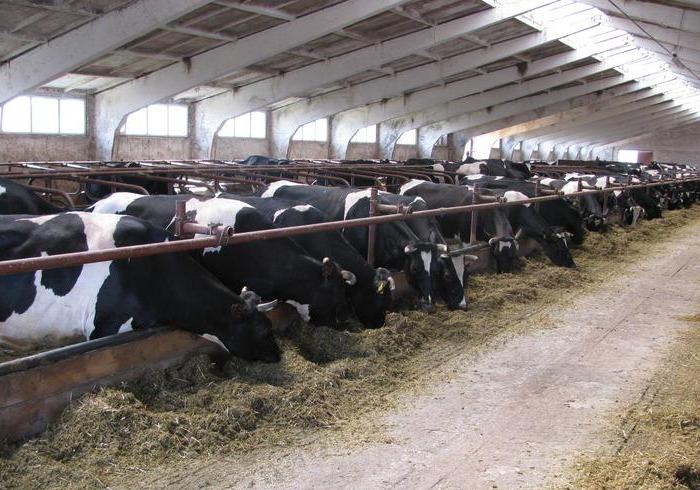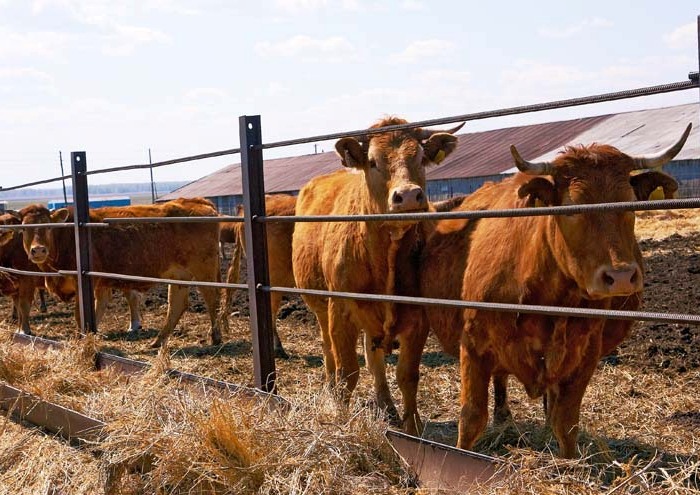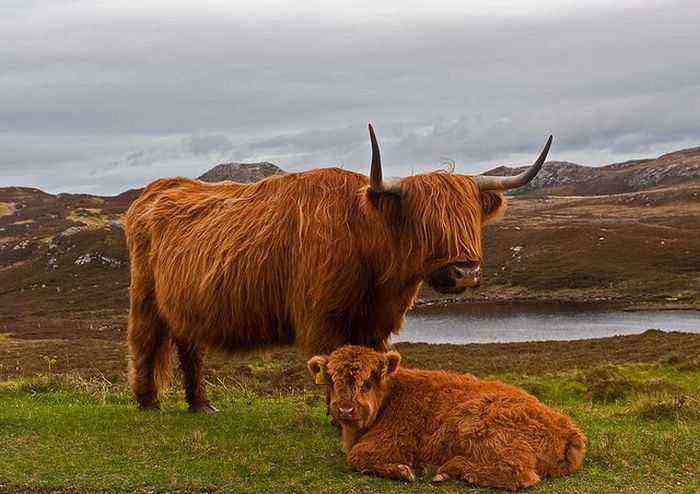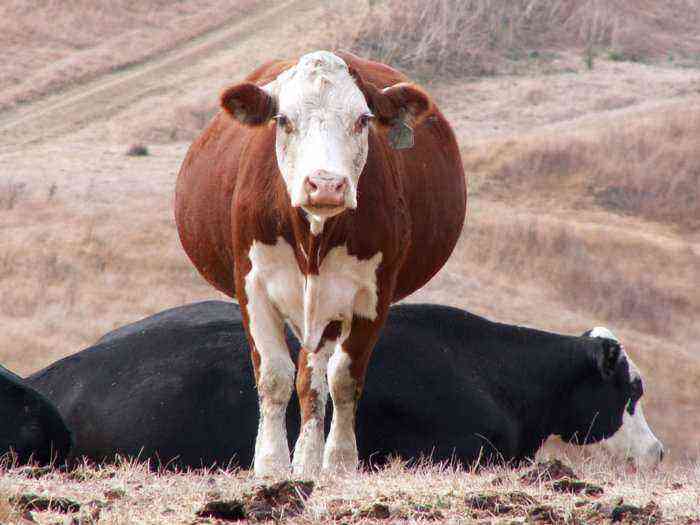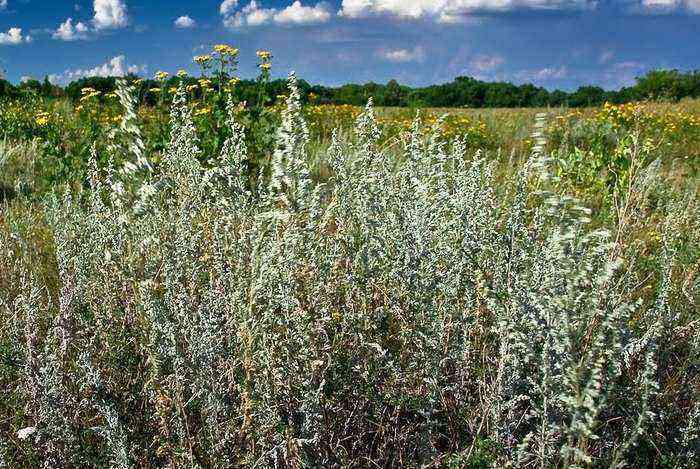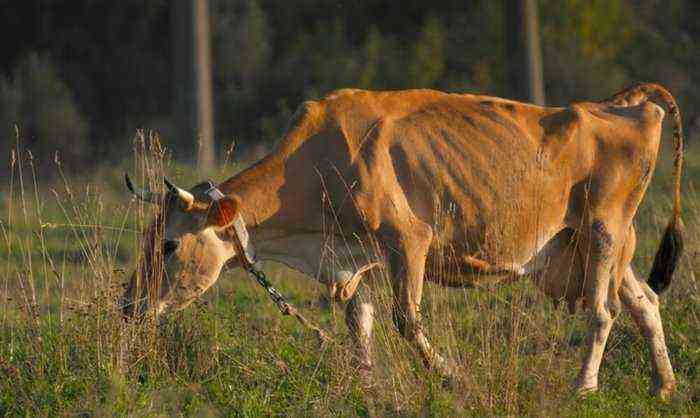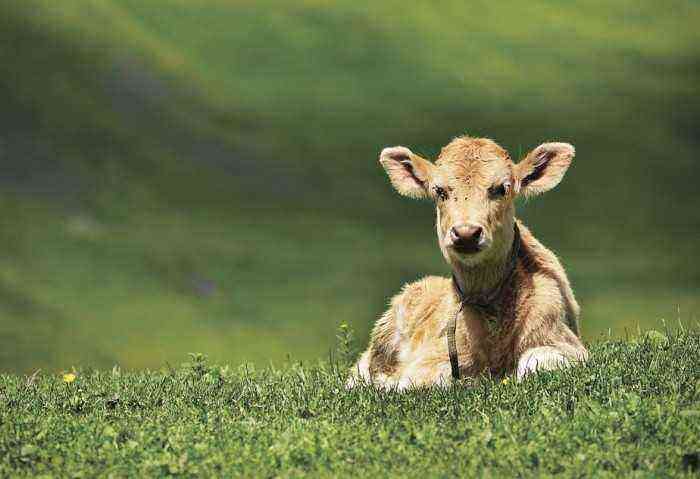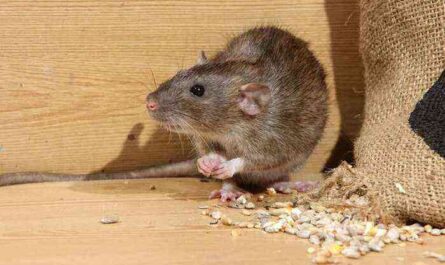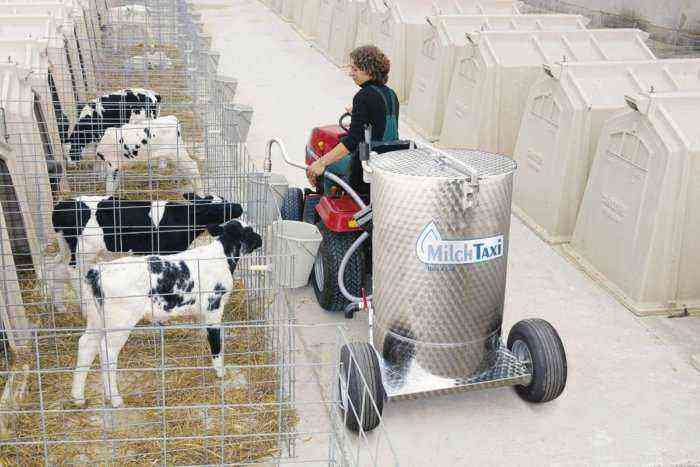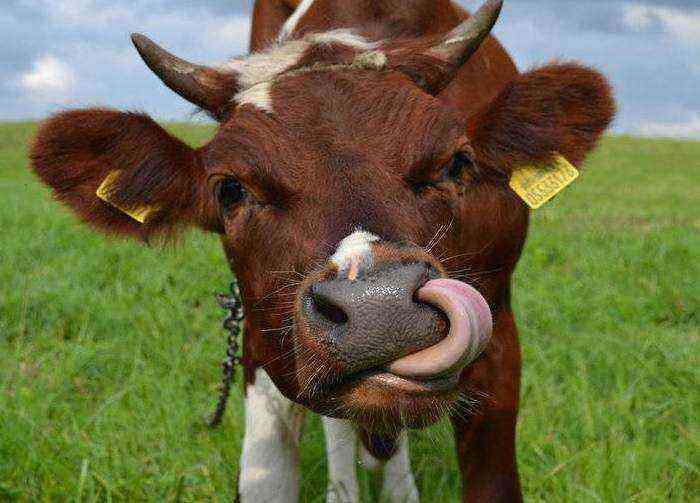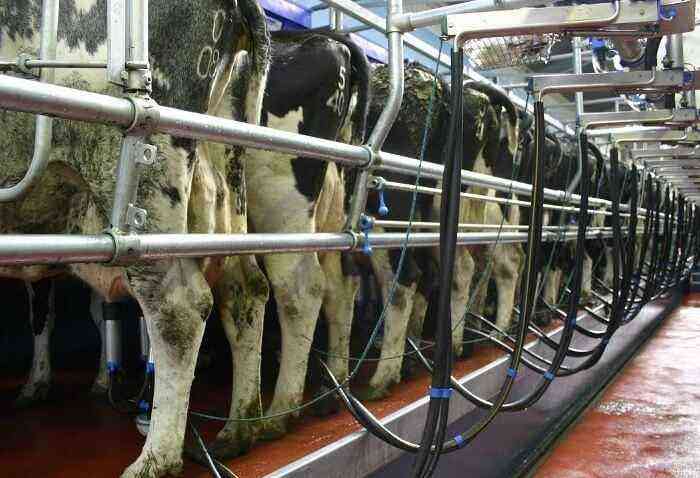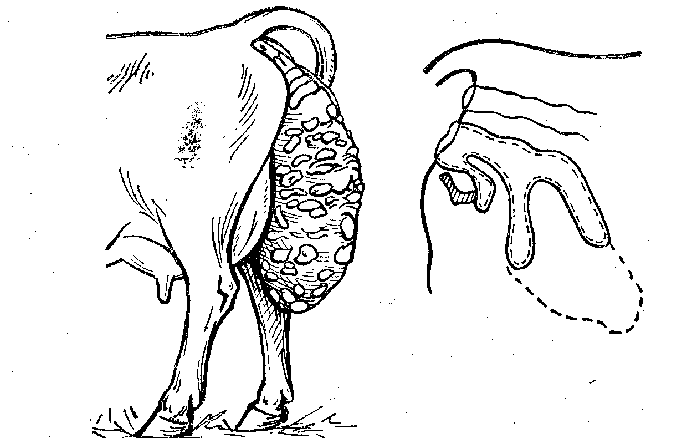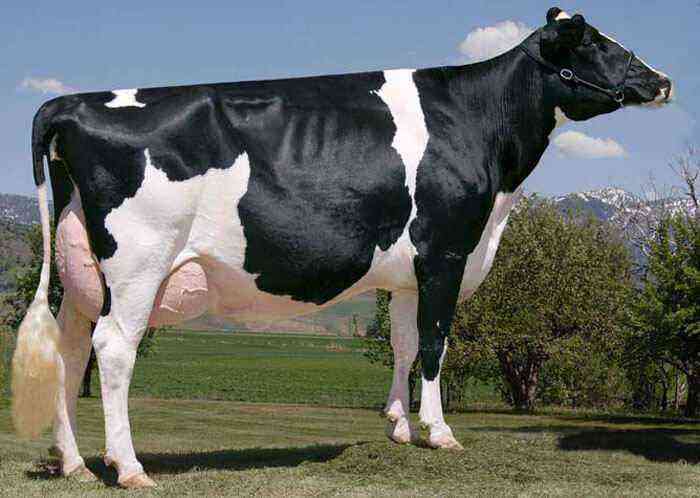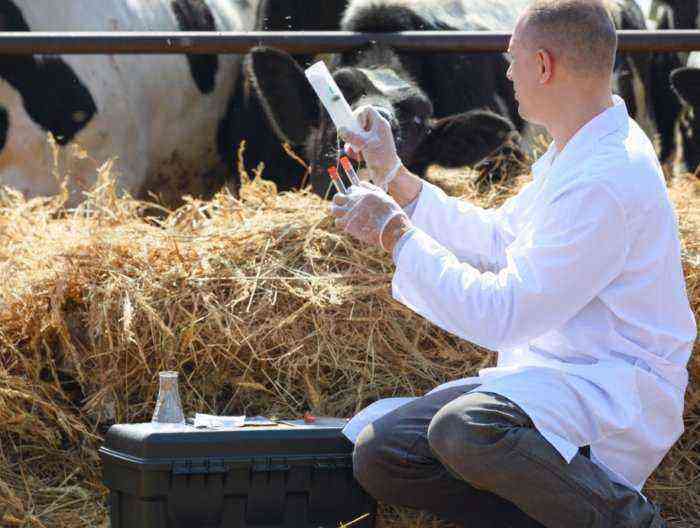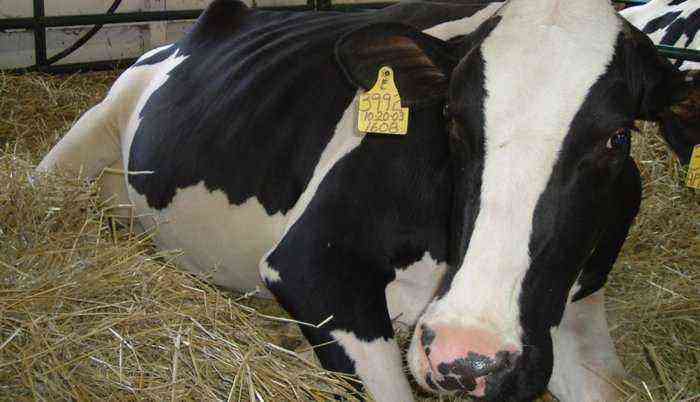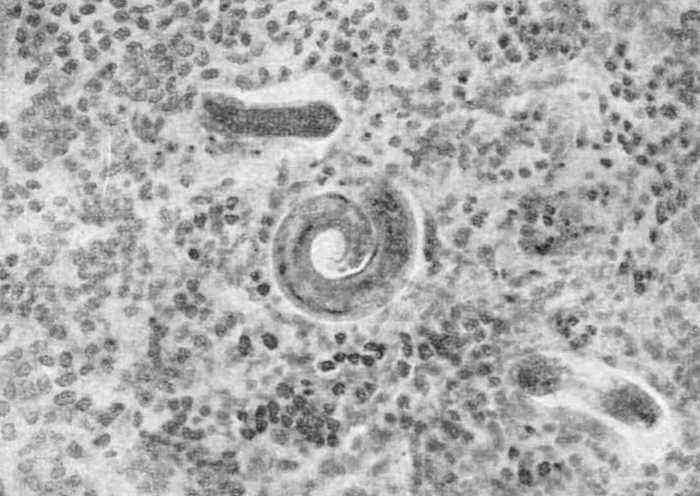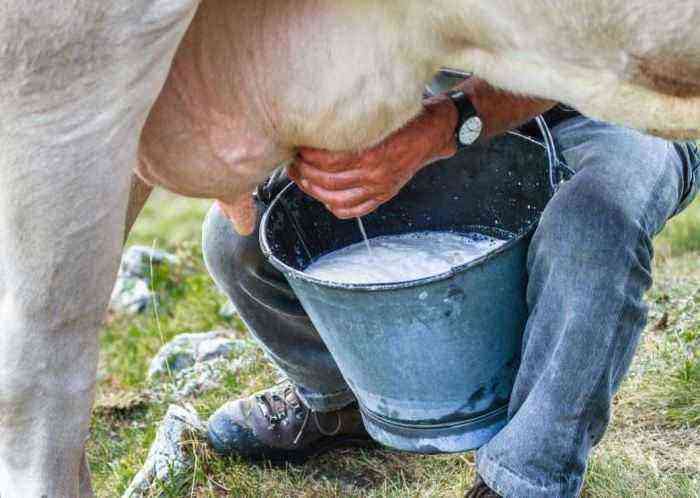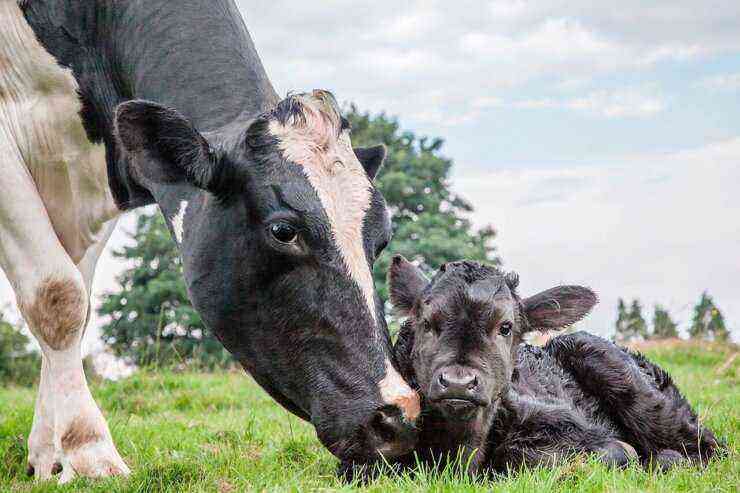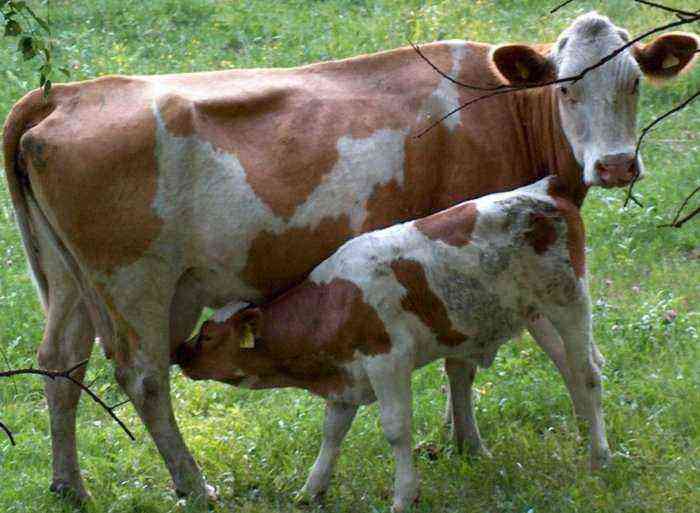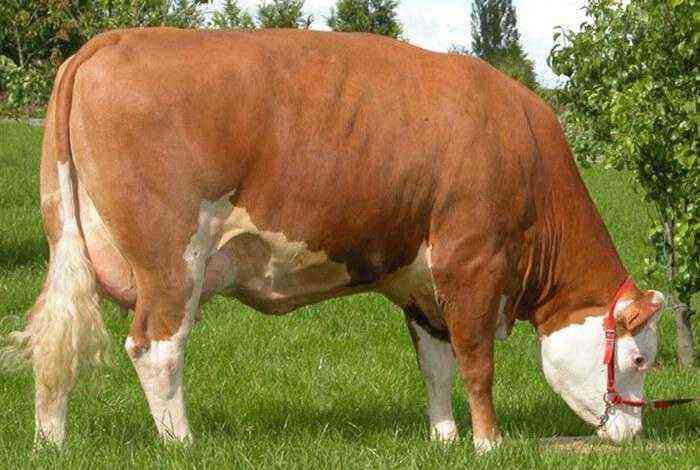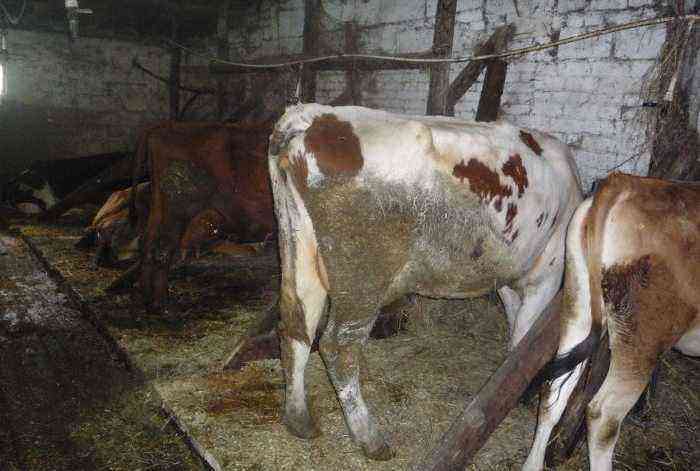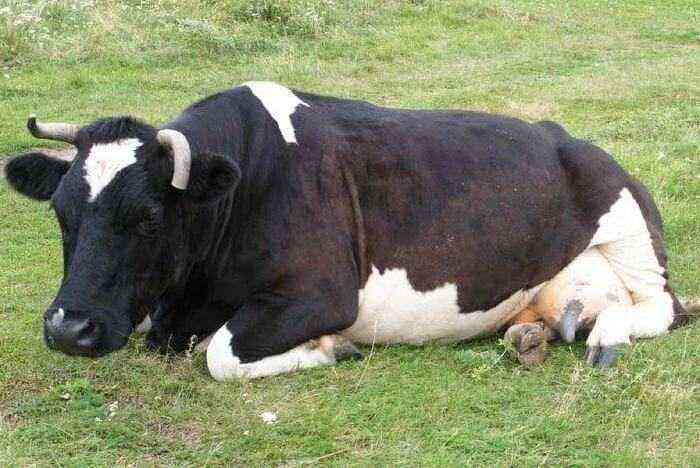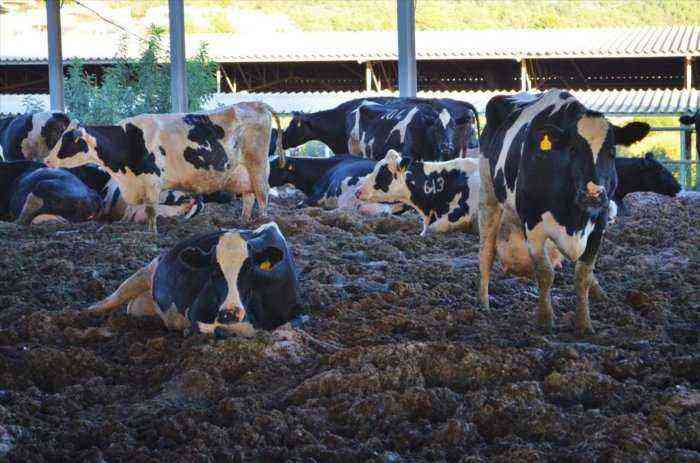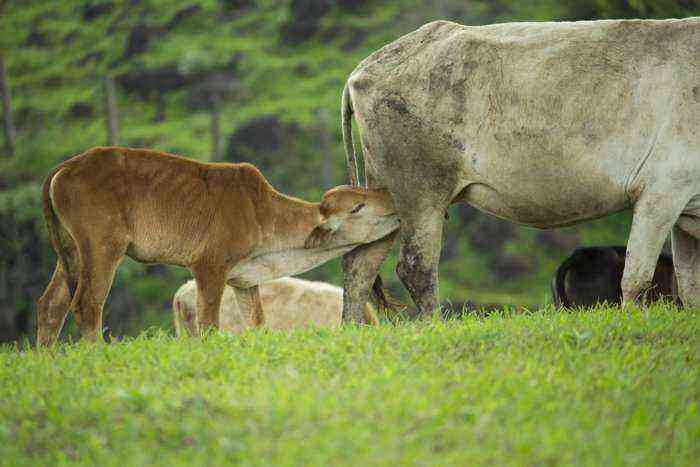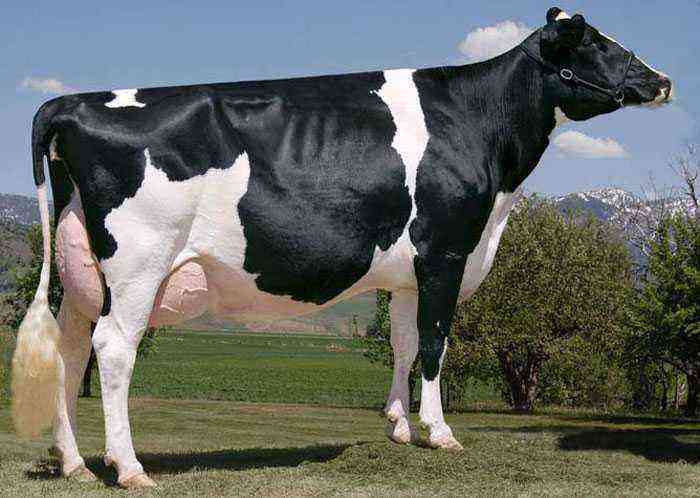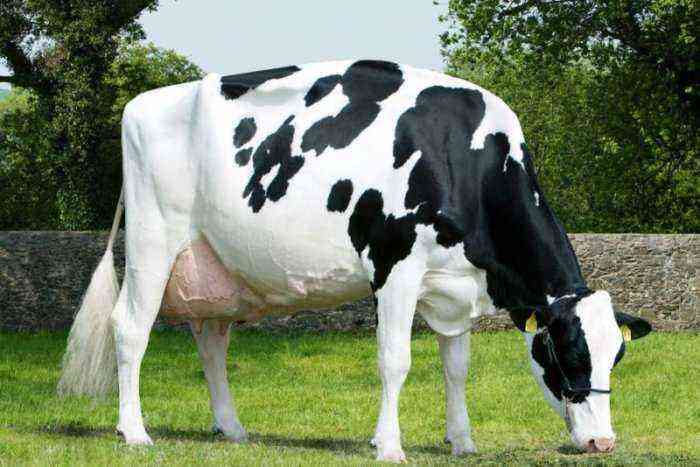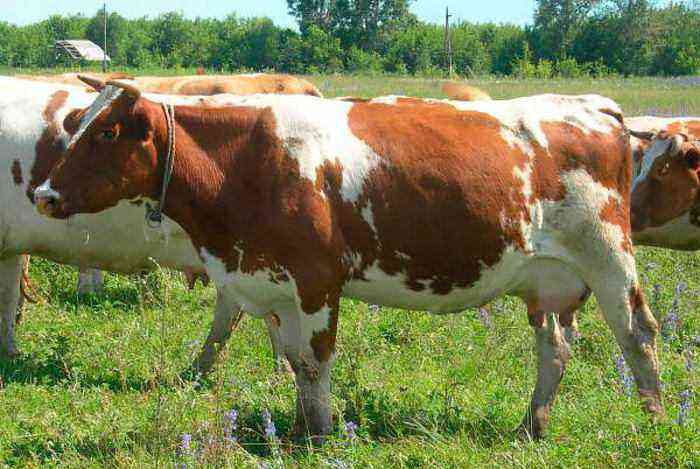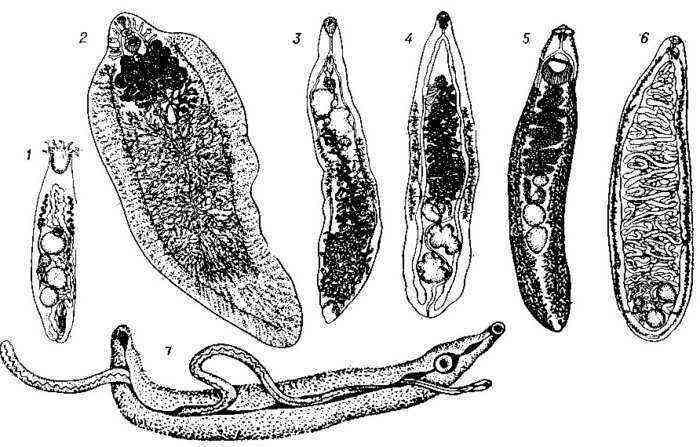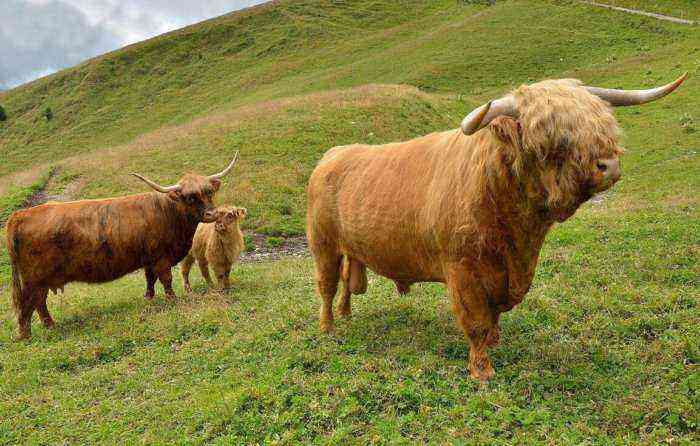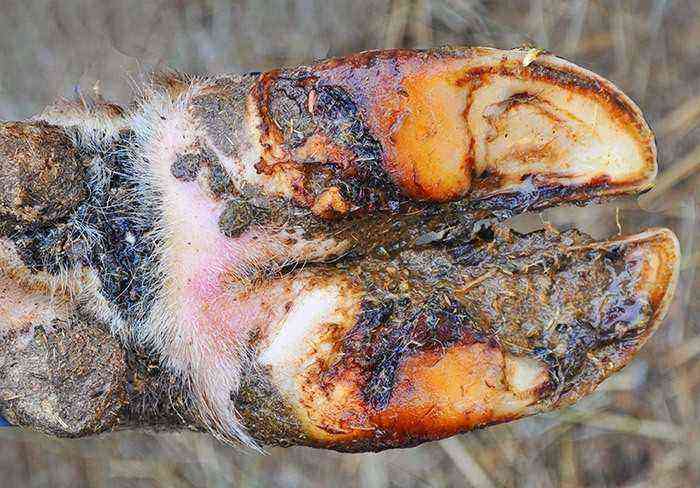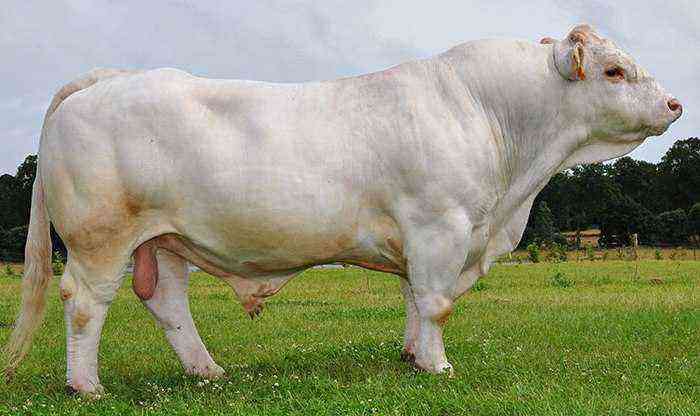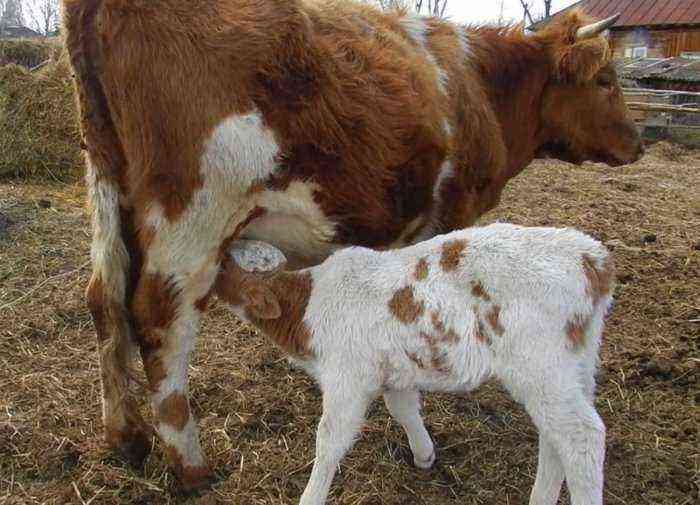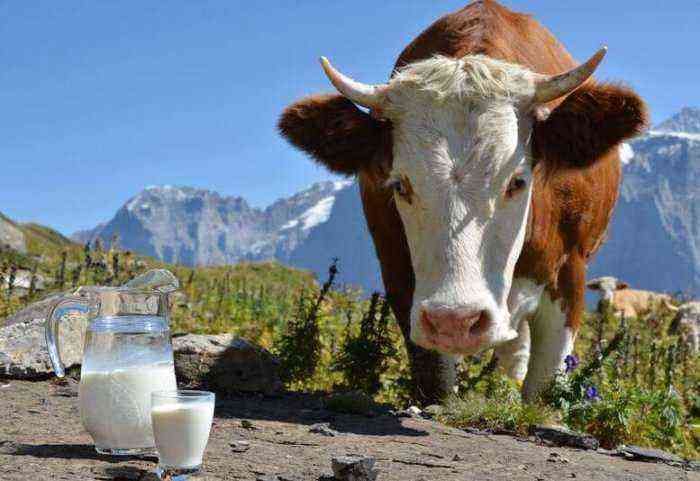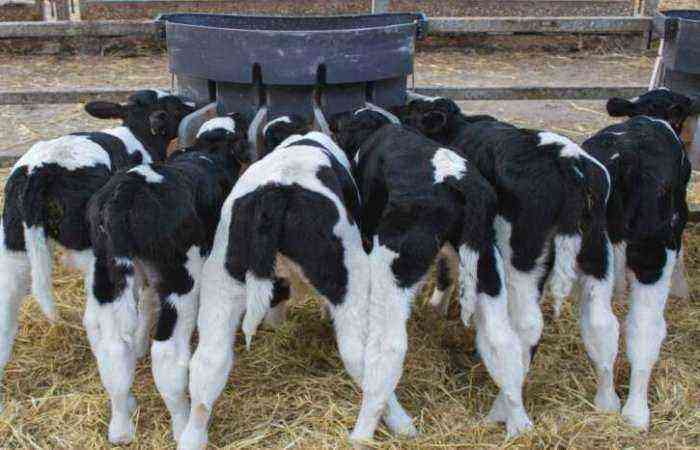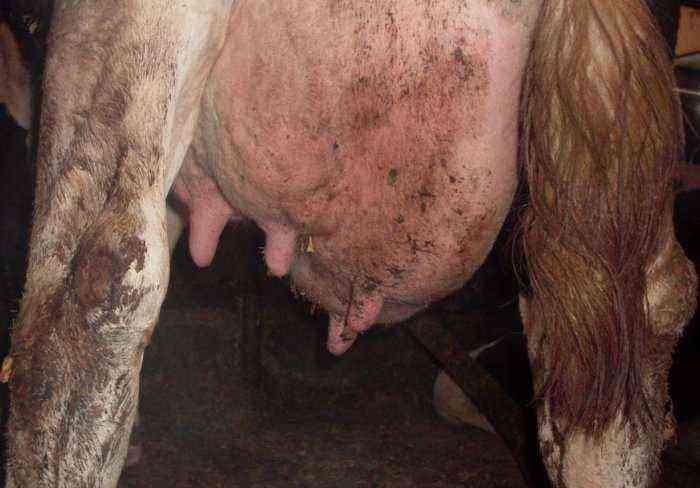The way animals are kept in industrial and private farms largely determines their productivity. And based on this, today many farmers are gradually moving from tethered to loose cattle housing, which has proven to be more productive in the US and European countries. But in order to draw specific conclusions for yourself, it is worth considering in more detail each of the methods and the advantages that they carry.
Method of keeping animals
What is tethered and loose housing of cows?
A particular method of keeping is effective and entails a significant increase in livestock productivity only if this is facilitated by a number of necessary additional factors. These include the purpose of breeding, the food supply that is available, the area available, and the design features of the premises used.
Anchored content
This type of keeping cows is considered traditional in domestic open spaces. More than 90% of all farms sell it when raising cattle. Its essence lies in the fact that the cow is fixed in a specially erected stall for the period of milking or feeding with concentrates. In this case, this type of content can be manifested in three varieties:
- Year-round stall.
- A combination of tethered and walking.
- Supplementing stall grazing on pastures in the summer.
The tethered keeping of dairy cows is most appropriate for breeding herds in which the livestock reaches 150-200 individuals. Animals are placed in a stall, the length of which is only slightly greater than the length of their body. At the end of the stall is a feeder and drinker. At the beginning, a conveyor is installed that implements the removal of feces. The animal is fixed, as a rule, due to a metal chain, the length of which provides free access to food and water, but excludes injuries between cows.
Milking of livestock is carried out using a portable milking machine. What is useful about this method is that it is possible to create an individual diet and conditions for each animal, focusing on its milk production and condition.
Free content
This method of keeping involves the free movement of animals around the barn and walking areas. This provides them with maximum physical activity. At the same time, feeding with green and succulent fodder is realized through a common feeder, which is located on the pasture. Milking is carried out in a specially dedicated milking parlor. The approximate size of pasture for livestock in this breeding option is at least 10 square meters. m for each individual. In this case, the entire area is lined with a hard surface.
Loose method of keeping cows
The specifics of loose housing largely depends on the climatic conditions of the region. In cold areas, durable stationary cowsheds with sufficient area are used. At the same time, regular walks of animals are mandatory. In warmer climates, cows are kept in special rooms, in which, if necessary, the side walls open. Also, depending on the specific conditions, loose breeding is divided into two subspecies: the use of deep litter and the box version.
Loose housing of cows on deep litter involves the division of barns into three separate sections:
- Pasture where animals are walked and fed.
- The milking parlor, which houses the milking machines.
- Separate section for rest.
The preparation of the premises for recreation is especially carefully approached. The floor in it is lined with a thick layer of straw or sawdust. On such a bed, as a result, the cow will sleep. Deep non-replaceable bedding allows animals to sleep in warmth all the time. The temperature in it during compression can reach up to 28 degrees. At the same time, the resting place is almost always clean.
Box content involves placing special boxes consisting of three walls in the rest section instead of a deep bedding. On the sides they are represented by thick wooden partitions, and a dividing wall is mounted in front. The area of such a stall is calculated based on the size and weight of the animal. The bottom of the box is lined with a small layer of straw, sawdust or special rubber mats.
Boxes with the back side go to the manure passage. At the same time, the length of such a building excludes the ingress of excrement into it, which ensures constant cleanliness in the resting place of the animal. Loose keeping of dairy cows in boxes allows reducing the daily consumption of straw from 3 kg (in the case of deep litter) to 1 kg. Feeding with succulent feed can also be carried out in the box. To do this, they are supplemented with conveyor feeders.
It should be noted that the homogeneity of the herd is an important point in the organization of loose housing. Animals on the basis of age, behavioral characteristics, productivity and other factors are collected in separate groups. Such groups are kept and walk separately from the rest.
Technology of milking in tie and loose housing
It should be noted that depending on the method of keeping animals used on the farm, the approach to milking livestock also differs. When tethered, milk is collected directly in the stall or in a specially designated milking room.
stall option
This approach to milk collection involves the use of portable milking machines, which are equipped with special milk pipes or buckets. In the first case, the milkmaid’s efforts are spent more rationally, and she can milk up to 50 heads without much difficulty. The use of buckets is more labor-intensive and for the same period of time one person is able to milk about 30-40 cows.
Stall keeping of cows
In general, this method is justified by the fact that it is easier to reveal the productivity potential of each animal. In addition, a permanent place of keeping makes it easier to work with a cow. At the same time, milking at the resting place does not exclude the ingress of manure particles and dirt into the milk.
In the milking parlour.
This technology significantly saves time and implies a higher degree of automation. For the milking of the herd, a separate hall is allocated, in which a stationary milking machine such as “Carousel”, “Tandem” or similar is mounted. At the time of milking, the animal is untied and transferred to a prepared room. The advantage of such devices is that they milk the cow as fully as possible.
Reference. When implementing this approach, the milkmaid is able to serve more than 100 cows at a time. In addition, at the entrance to the hall, you can install a special sink that will prevent manure from getting into the milk.
Milking in loose housing
In this case, milking is also carried out in a separate milking parlor. At the same time, it must be designed in such a way that a milked cow enters the rest section through a separate exit, without meeting with individuals that have not yet been milked.
It is necessary to plan the milking process in the hall so that all the cattle included in one group are milked in a period of time not exceeding 3,5 hours. For this purpose, both group stationary milking machines and individual machines can be used. Animals in loose housing are not recommended to be transferred frequently (more than 3 times) from group to group during the lactation period. Otherwise, the overall productivity of the cow may drop significantly.
The milking machine must be selected, taking into account the number of working operators, the size of the herd, the area of the hall. The best option in this regard is the Herringbone unit with group machines without partitions. UDA-12-24 devices are also often used. In such installations, two operators work at once, but the number of cows served increases depending on the model. UDA-8A is a simpler version of the milking unit, which can be easily used by one operator.
Stall dimensions for tie-down cows
When choosing a tethered livestock breeding method, it is important to create optimal conditions for this. An important parameter in this regard is the correct size of the stall. Ideally, it is determined on the basis of the oblique body length of the animal. This is the distance from the junction of the shoulder blade to the base of the tail. Further, 10 cm is added to this value. The result is the length of the stall. This type of machine is called short.
Stall length is important
In domestic farms, it is traditionally customary to use universal long stalls, the length of which is 190-200 cm. As for the width of the pen, it depends on the weight of the cow and her condition. On average, the distance between the side dividers should be from 1,1 to 1,3 m. For cows that are 7 months pregnant, the width of the pen is increased to 1,5 m.
Characteristically, long stalls provide fairly free movement for the animal. But this is also the main disadvantage of this type of structures. A long paddock quickly becomes contaminated with manure, which means that it requires constant cleaning. Short stalls in the presence of limiters in the front part are practically not polluted.
Separators are most often made of metal pipes. A concrete feeder is installed behind the front partition. In order for the animal to have access to food even from a lying position, the frontal divider should not be made higher than 25 cm.
Advantages and disadvantages of methods
Considering in more detail the parameters of each of the content methods, it should be noted that each of them implies both its own advantages and disadvantages. The advantages of the tethered option are the following points:
- An individual approach to feeding and caring for animals. This allows you to better develop the potential of the cow.
- Ease of veterinary examination and general maintenance of the animal.
- The possibility of unhindered joint keeping of cows, which differ in their behavior, productivity and age. Restriction of movement prevents them from injury.
- Less space is required for content.
As for the disadvantages of this method, they should include the need for a large number of employees, huge labor costs on their part. In addition, it is extremely difficult to fully automate such an economy.
Free content
When organizing loose content, the following advantages of the method are distinguished:
- The possibility of maximum mechanization of the farm, as a result of which the required staff of working personnel is reduced.
- Pet care requires less effort and time.
- High activity and the most natural vital activity of animals suggest the development of stable immunity and general health promotion.
- High-quality exercise, in turn, significantly increases the dairy productivity of livestock.
The disadvantages of this method include the following points:
- Complication of the work of a veterinarian and livestock specialist. A sick cow is much more difficult to identify in the general mass.
- The impossibility of organizing an individual diet for each cow.
In addition, the transition to loose housing of cows is also complicated by the fact that there are no specialists in this field in the domestic open spaces. This method is just beginning to gain popularity in our country. Accordingly, it is accompanied by a lack of practical experience. And failure to comply with the key points of the content, in turn, can lead to a violation of general sanitary conditions and the development of diseases.
Conclusion
Each of these methods of cattle breeding deserves the right to exist. Choosing the most suitable, the breeder must focus on the resources that are available. And yet, if loose housing is implemented qualitatively, the milk yield of cows on the farm can be increased significantly.
